 |
CoelacanthPeriod: Jurassic |
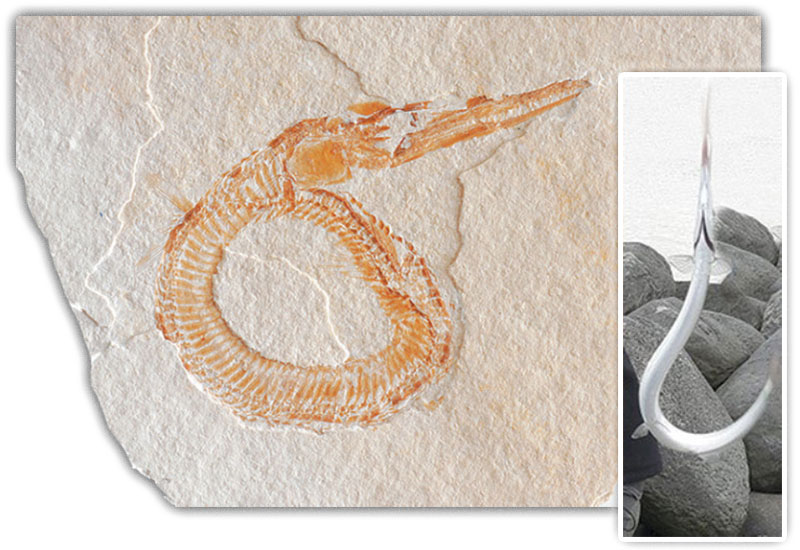 |
NeedlefishPeriod: Cretaceous If Darwinists’ claims that living things descended from one another were true, then we should encounter a large number of fossil specimens bearing the characteristics of two different life forms (such as a halfneedlefish and half-herring, or a half-whale and half-shark, or a half-trout and half-crocodile). But no such fossil has ever been found. In fact, Darwin saw that this absence of proof posed a major dilemma for him even when he first launched his theory. For that reason, he wrote the following in the chapter "Difficulties on Theory" in his book The Origin of Species: "Why, if species have descended from other species by insensibly fine gradations, do we not everywhere see innumerable transitional forms? Why is not all nature in confusion instead of the spec es being, as we see them, well defined? . . . But, as by this theory innumerable transitional forms must have existed, why do we not find them embedded in countless numbers in the crust of the earth?" (Charles Darwin, The Origin of Species, New York: Oxford University Press, 1998, pp. 140, 141) Some 150 years after Darwin’s time, the problem facing evolutionists is exactly the same. |
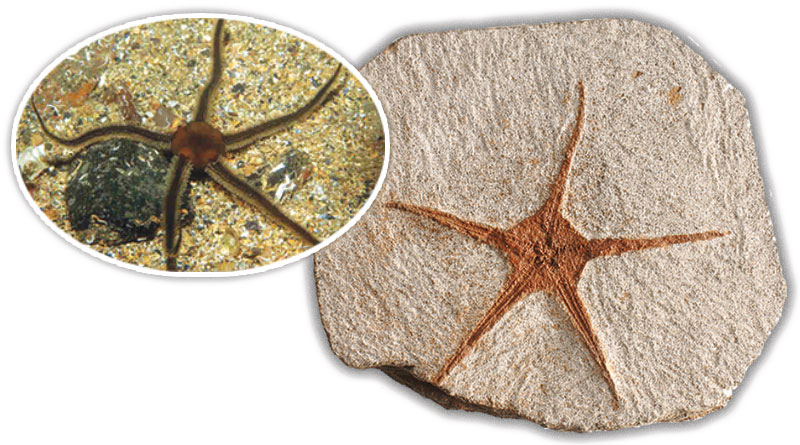 |
Star FishPeriod: Ordovician Starfish generally live on the sea floor, and some species live at depths of 7,000 meters. Evolutionists are in a hopeless position when faced with these echinoderms, which have survived unchanged for around half a billion years. These creatures have remained exactly the same, not for 10 million or 100 million years, nor even for 200 million, but for roughly 500 million years. If evolutionists’ claims were true, then starfish should long since have turned into different life forms over the course of 500 million years, and the remains of many odd-looking creatures, halfstarfish and partly some other invertebrate, should be visible in the fossil record. Yet the fossil record contains no such evidence for evolutionists’ claims. As the 500-million-year-old starfish pictured here proves, starfish have always existed as starfish,care not descended from any other life form, and never turned into any other species. |
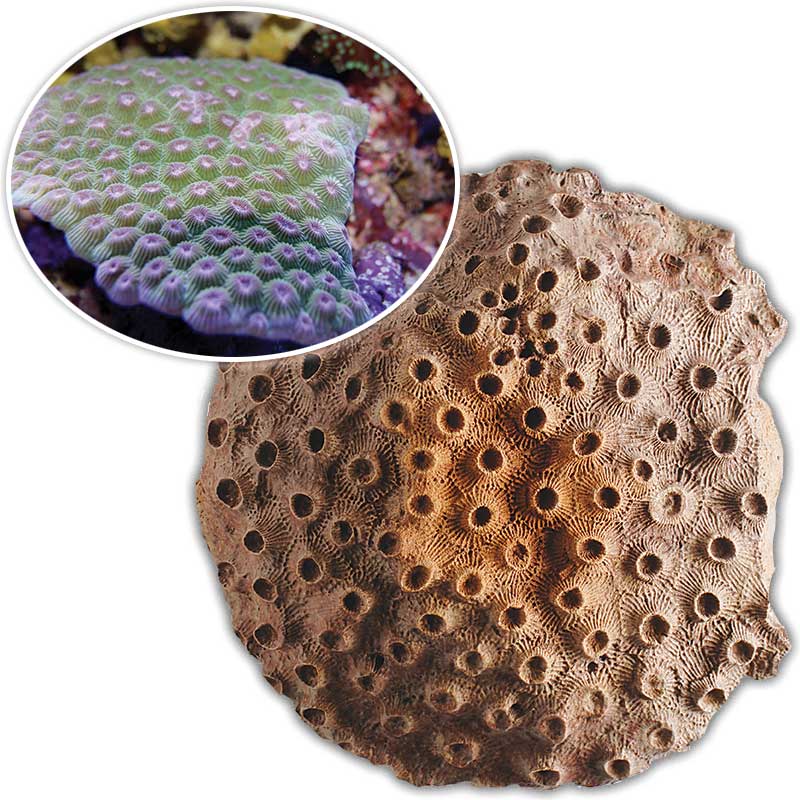 |
Moon CoralPeriod: Devonian |
 |
HalfbeakPeriod: Jurassic The halfbeak has a long, beak-like jaw, conical in shape and equipped with powerful teeth. Comparison of this 150-million-year-old fossil discovered in Germany with specimens living today shows that the species has undergone no change in its appearance, nor any other changes in its bone and tail structure. Halfbeaks are one of the countless species that demonstrate the invalidityof evolution. Halfbeaks, the oldest known specimens of which date back to the Jurassic period (206-144 million years ago) have remained unchanged for millions of years. |
 |
EelPeriod:Cretaceous Fossils from the same species exhibit no changes throughout the time they appear in the fossil record. That fact was well-known to paleontologists even before Darwin published his Origin of Species. Darwin prophesied that subsequent generations would find new fossils to fill the gaps; but following all the paleontological research that has taken place over the last 120 years or so, it has become clear the fossil record will not confirm that prediction. Despite the passage of 95 million years, the eel in the picture has not altered in the slightest. It has never evolved or turned into any other life form. |
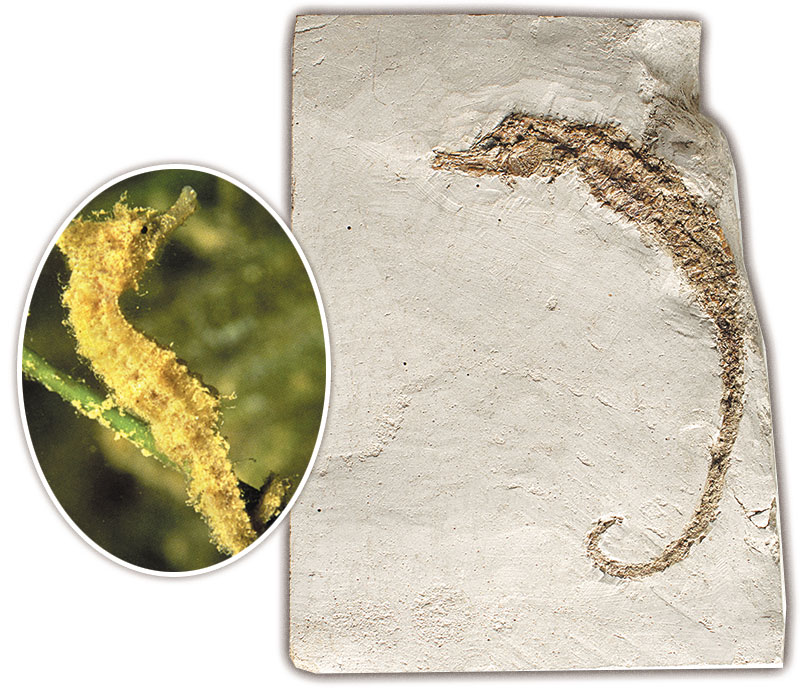 |
Sea horsePeriod:Pliocene Sea horses are very striking with their external appearance and special structures. They vary between 4 and 30 cm (1.5 to 12 inches) in length and generally live among seaweeds and other plants along coastal strips. Their protective armor keeps these animals safe from danger. That armor is so strong that it is almost impossible to break a dead sea horse with one’s bare hands. The three-million-year-old sea horse in the picture says that “life forms do not evolve,” and that God creates them all. |
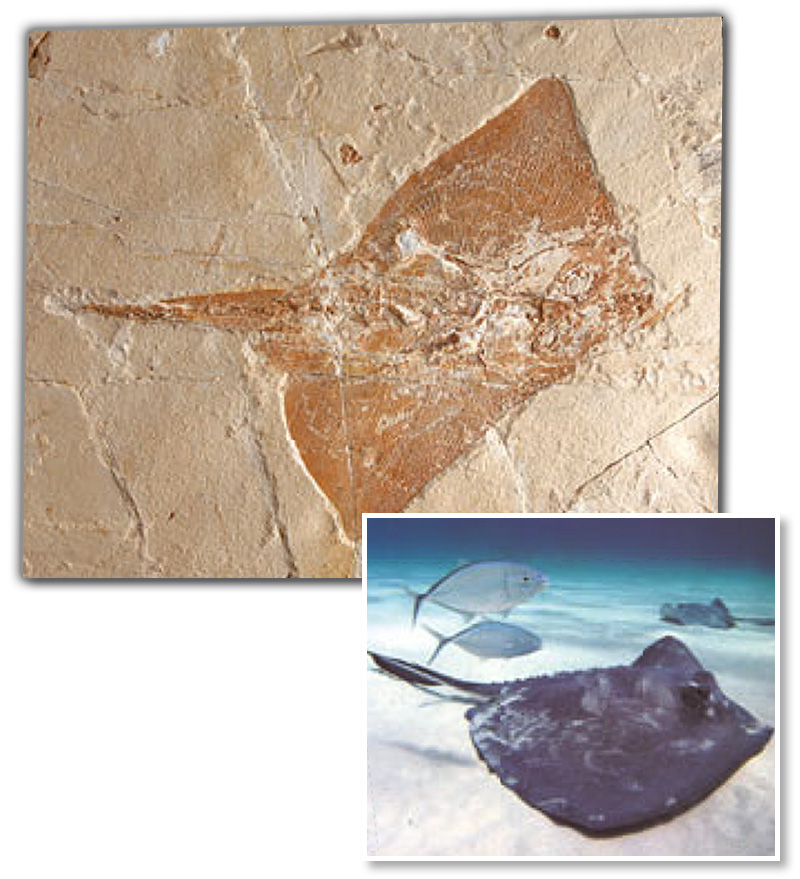 |
StingrayPeriod: Eocene Stingrays are cartilaginous fish. In the face of a threat, they defend themselves with the stings on their tails. Their eyes are located above their flattened bodies and their mouths are underneath. Just like sharks, they find their food by using their sense of smell and by electrical senses. They generally live submerged on the ocean floor, with only their eyes and tails discernable. The fossil pictured evidences that fish have not undergone evolution. Stingrays that lived 50 million years ago were no different from the ones living today. Despite the passage of millions of years, no change has occurred in the structure of stingrays. If evolution had really taken place, then stingrays would have undergone various stages, leaving behind many fossils documenting these sequential stages. However each fossil discovered reveal that today's stingrays and those that lived in the past are the same. All these deny the claims of evolutionists. |
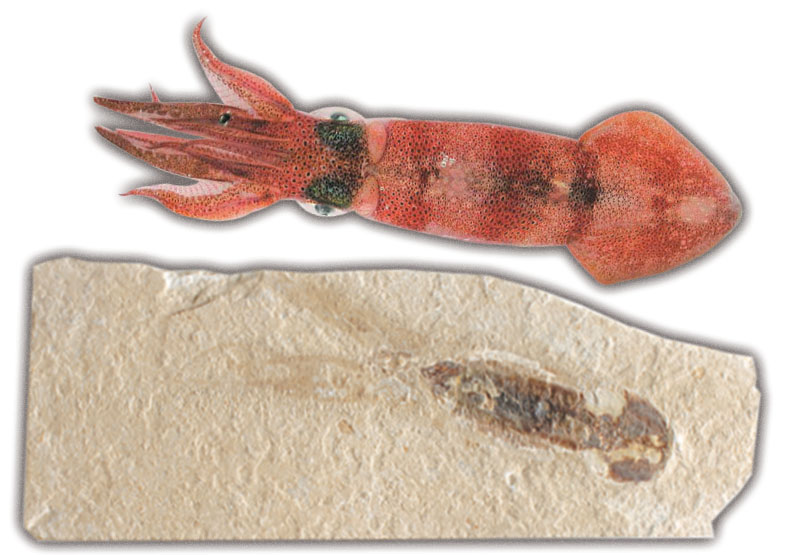 |
SquidPeriod: Cretaceous The 95-million-year-old fossil pictured here is proof that squid have always existed as squid throughout geologic history, defying evolutionist claims. Unable to provide the slightest evidence that squid evolved from an earlier life form or developed any further, evolutionists are completely undermined by the fossil record. |
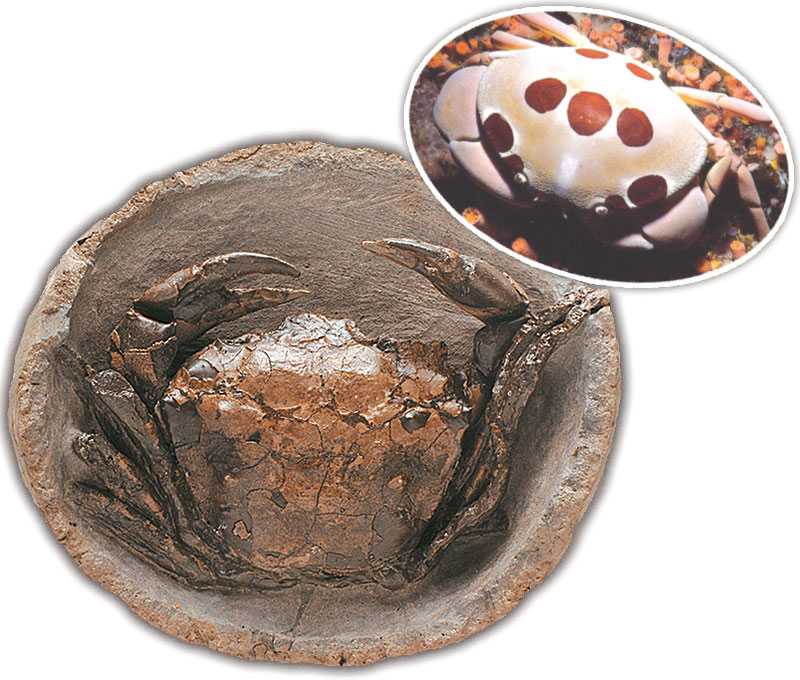 |
CrabPeriod: Oligocene The fossil record is rich enough to permit a general comprehension of the origin of living things and provides us with a definite scenario: Various species of living creatures appeared on Earth all at once, individually and without "evolving" through any intermediate forms. This is one of the proofs that Almighty God created all living creatures. One of these fossils that demonstrates the clear fact of creation is shown here: the nearly 35-mill on-year-old remains of a crab. |
 |
StingrayPeriod: Cretaceous Like all other fish, stingrays have always existed as stingrays. Darwinist hypotheses, claims and theses are of no scientific worth, because all the scientific data, beginning with fossil findings, refute its assertions. The hoaxes, distortions and propaganda to which Darwinists resort in order to keep their theories alive are pointless. As the 95-million-year-old stingray pictured here shows, living things tell us that they did not evolve, but were created, and this fact is impossible to be concealed. |
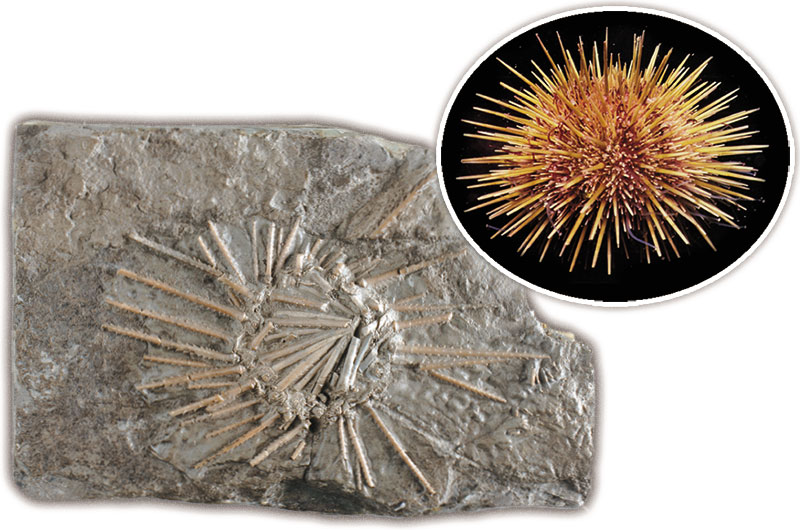 |
Sea UrchinPeriod: Carboniferous Pennsylvanian sea urchins are echinoderms that can be found today in all seas of the world. Sea urchi fossils dating back 300 million years reveal that these invertebrates with their complex structures have existed for millions of years. During all that time, no change have occurred in their structure, and they have undergone no intermediate stages. Darwinists are desperate when confronted by these fossils, for they prove that the evolution process has never existed. |
 |
Soldier FishPeriod: Cretaceous The fact that soldier fish living 95 million years ago were identical to those in existence today shows that these fish have never changed over millions of years. This state of affairs, which refutes the Darwinist claim that living things evolved by changing, puts evolutionists in an impossible position. Concrete scientific findings such as the fossil record have proved that evolution never happened. |
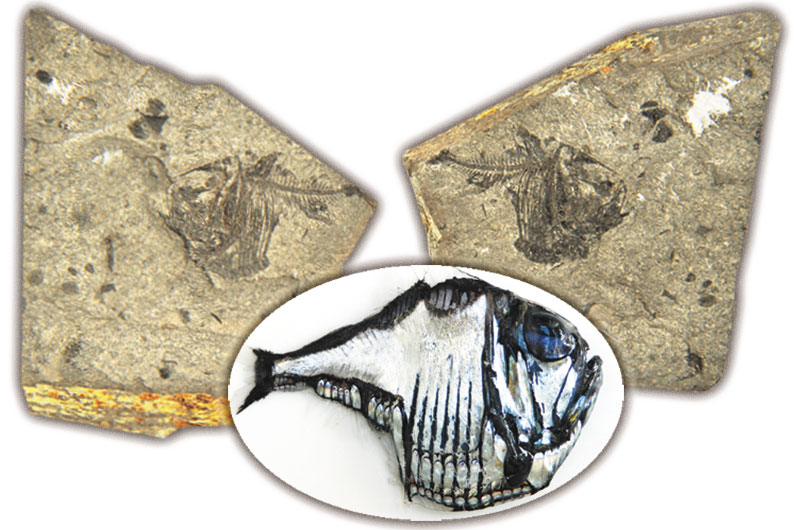 |
HatchetfishPeriod: Oligocene Like several other deep sea fish these small, bright, silver fish resembling hatchets in appearance have light producing organs beneath their stomachs. These fish have up to 100 light organs capable of emitting light beneath their bodies. The hatchet fish, which has lived in the seas for millions of years with this perfect creation, never developed out of any other life form and has never turned into another one. The 37-to-23-million-year-old hatchet fish from the Oligocene period in the picture was found in the Czech Republic and is identical to specimens living today. |
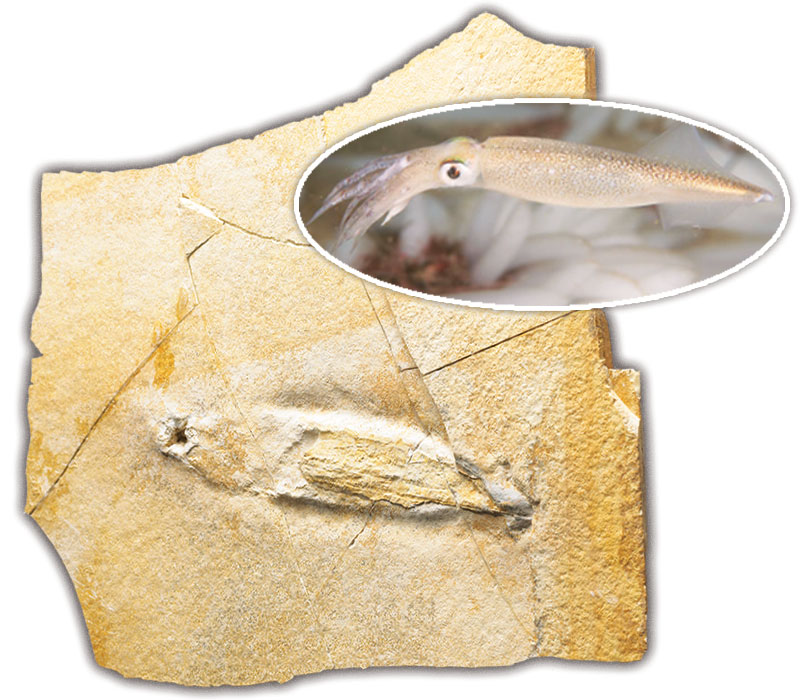 |
Opalescent SquidPeriod: Jurassic Like other created like forms, this 148-million-year-old opalescent squid has come down unchanged to the present day. This is obvious proof that evolution never happened and that God creates all living things. The opalescent squid is one of the decapod family, and has 10 limbs protruding from its mouth region. Opalescent squids have highly sensitive senses of smell and taste. Their eyes are so powerful that with the vision they enjoy, by means of 70 million eye cells, they can immediately recognize a danger approaching from behind and perform a series of movements to protect themselves. God has given this animal a perfect defensive system. When attacked, the opalescent squid emits a dark-colored liquid from its ink sac, thus confusing the predator and allowing it to escape at high speed. |
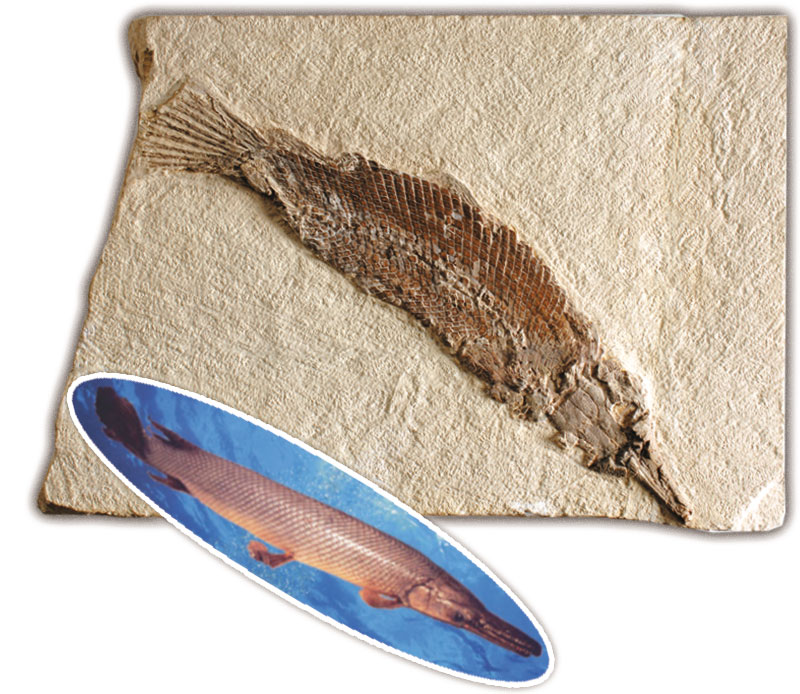 |
GarfishPeriod: Eocene Hundreds of garfish fossils that have been collected give evidence that these still-living fish have remained unchanged for millions of years. The garfish pictured, between 54 and 37 million years old, is no different from those living in our seas today. This exact similarity is an inexplicable situation for Darwinists and once again proves the fact of creation. |
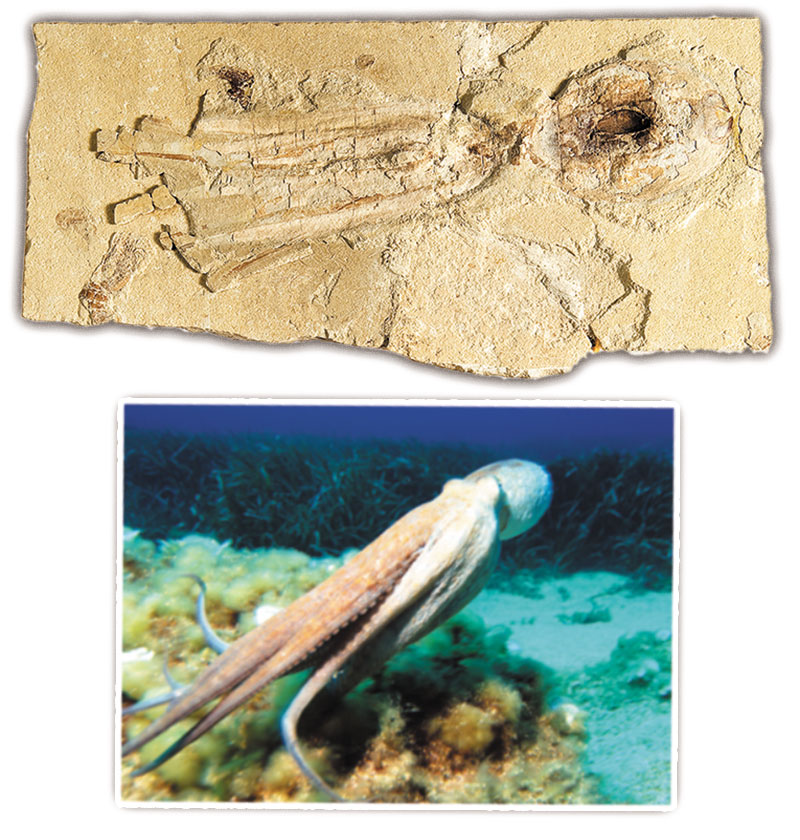 |
OctopusPeriod: Cretaceous Ahtapot gibi kabuksuz ve omurgasız hayvanların dahi tüm detaylarıyla fosil kayıtlarında bulunması Allah'ın mucizelerinden biridir. Bu yumuşakçaların kafa yapısı, kolları ve göz çukurları dahi, bulunan fosillerde çok net bir şekilde görülmektedir. Böylece insanlar Allah'ın yarattığı bütün türlerin fosil kayıtlarını görerek bütün canlıların hiçbir değişikliğe uğramadığına şahit olmaktadırlar. Ahtapot Kafadanbacaklılar sınıfından bir yumuşakçadır. Vücutları kısa ve yuvarlak yapıdadır. Bir çift gelişmiş gözleri vardır. Başının çevresinden 8 adet kol çıkar. Bu kolların uzunlukları aynı olup, dipte kısa bir zarla birbirlerine bağlıdır. Her kolda iki sıra vantuz bulunur. 2-3 santimetreden 10 metreye kadar ulaşan değişik büyüklükte türleri vardır.Ahtapot da tıpkı diğer hayvanlar gibi Allah'ın muhteşem yaratışının eseridir. |
 |
Horseshoe CrabPeriod: Jurassic Horseshoe crabs living in the Jurassic Period, approximately 150 million years ago, are identical to those living along seacoasts today. This lack of differences demolishes evolutionist claims and once again proves that the thesis of living things' evolution of is a ridiculous myth. Science irrefutably reveals that living things are the work of Almighty and All-Powerful God. |
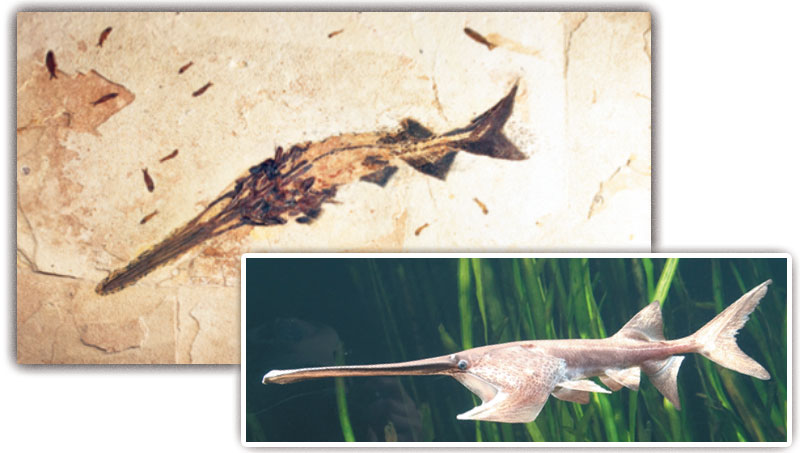 |
Paddle FishPeriod: Eocene The paddle fish’s highly pronounced spatula-like mouth, its nose structure and the small fins along most of the length of its body can be clearly seen in this 50-million-year-old fossil. The animal has never changed in the intervening 50 million years, and never evolved. When he launched his theory of evolution, Charles Darwin claimed that life forms evolved from one another by way of mutations; yet the millions of fossils that have been unearthed show that life forms are not descended from one another, and that they have remained the same since they were first created to the present day. The scientist Stephen Jay Gould states how no passage between species is possible through mutations: “A mutation doesn't produce major new raw material [DNA]. You don't make new species by mutating the species.” (Stephen Jay Gould, "Is a New and General Theory of Evolution Emerging?", Lecture at Hobart & William Smith Colleges, 4 February 1980) |
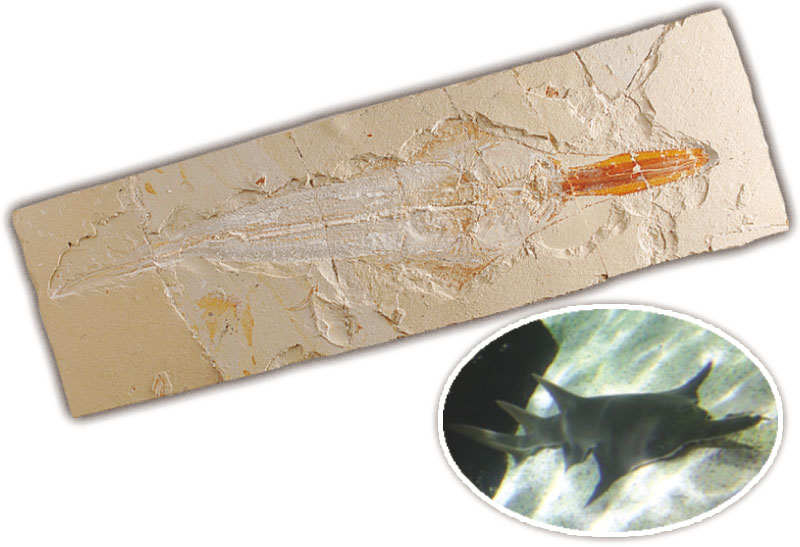 |
SawfishPeriod: Cretaceous There are no differences between present-day specimens and the 95-millionyear- old sawfish pictured. This, by itself, puts the theory of evolution in a severe quandary. Our Almighty Lord has created all living things as separate species, which have survived unchanged from the moment of their creation right down to today. |
 |
SardinePeriod: Cretaceous Cat sharks that lived millions of years ago possessed all the same fully formed features as those living today—as is confirmed by the 95-million-year-old cat shark pictured, which is identical to present-day specimens. God has created cat shark to be fully formed and with nothing lacking, as He has all other living things. Like them, cat sharks never underwent evolution. |